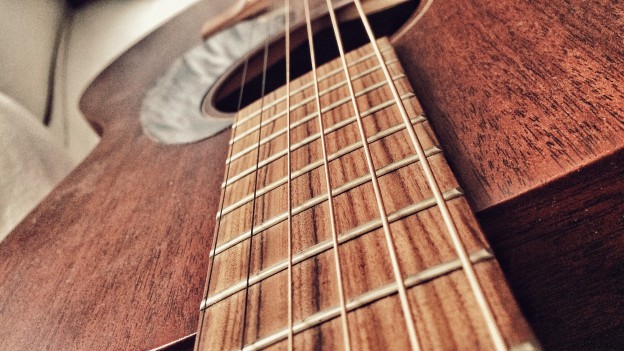Last year, I wrote about the recording process for Banding Together 2014 and how it evolved from 2012-2014. In 2015, the process took another step forward. Here’s how.
In 2012, I put a stereo field mic on my dining room table, sat in a chair, and let it happen. In 2013, I learned a bit about mic placement and I stood up to get some more energy on the recording. In 2014, I abandoned the stereo field mic approach and instead used two mics. This gave me better control over the balance between the voice and guitar.
As I set up to record Banding Together 2015, I started with the same approach as 2014. And then at the last minute, just before hitting record, out of the corner of my eye, I saw that same stereo field mic I had used in 2012 and 2013. I had a thought!
Though I liked the sound of the 2014 recording, everything sounded “up close.” As the listener, I didn’t get the sense I was in the room. There was no ambience, no space, no room sound. So at the last minute, I grabbed the stereo mic, placed it on the other side of the room, and hit record. I didn’t expect to use it in the final recording at all, but I thought it would be a nice experiment. I had changed my approach each year since 2012. It just didn’t feel right to take the same exact approach.
Well… what was just an experiment turned into a revelation.
I was shock when, after having finished recording my performance, I dropped the stereo field mic’s audio into the mix. It made it sound so much bigger! There was a bit of space between the source of the sound and the mic. The room acted as a natural mixing board, blending the sounds of my acoustic guitar and my voice in a natural way. Combining this sound source with the close up sources made the overall recording sound fatter and larger. It sounded like you were there in the room with me. Which was exactly what I was going for!
Having that room sound alongside the closer mics on my voice and guitar really gave me the best of both worlds. I had the detail and presence I needed from the close ups and I also had the room and a sense of space from the room mic.
And of course, after all this, I made a connection I probably should’ve made from the beginning.
It’s a lot like recording drums! The close up mics are for the detail, but the drums don’t sound complete until you hear what they sound like in the room. The room is essential!
Just like anything you are trying to capture acoustically, the room can make all the difference.
P.S. If you’re interested in listening to the final recording, it’s available on iTunes, Spotify, and everywhere else. Check it out here.
